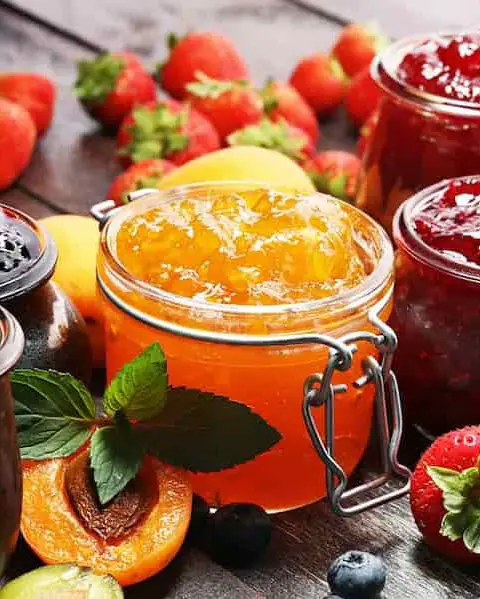In the UK, scones are more than just a baked delight; they are a cherished part of the nation’s culinary heritage. These simple yet versatile pastries hold a special place in British tea culture, seamlessly fitting into the cozy afternoon tea tradition that many hold dear. The beauty of scones lies in their variety. Whether you prefer them sweet or savory, plain or packed with ingredients, there’s a scone recipe out there for everyone.
In this article, we’ll explore seven easy scone recipes that cater to a range of tastes and occasions. From the classic British scone that has graced tea tables for generations to innovative twists that add a whole new dimension to your baking repertoire, prepare to delight in the simplicity and joy of scone making.
1. Classic British Scones
The classic British scone serves as the backbone of afternoon tea, its simplicity allowing the flavors of jam and cream to sing. A good scone has a light, soft texture, with just a hint of sweetness.
Ingredients:
- 2 cups all-purpose flour
- 4 teaspoons baking powder
- ½ teaspoon salt
- ¼ cup cold butter, cubed
- ¼ cup granulated sugar
- ⅔ cup milk
- 1 egg, beaten, for glazing
Instructions to Make Classic British Scones
- Preheat your oven to 425°F (220°C).
- Sift the flour, baking powder, and salt into a large bowl.
- Using your fingertips, rub the butter into the flour mixture until it resembles fine breadcrumbs. Stir in the sugar.
- Make a well in the center and pour in the milk. Mix quickly with a knife to form a soft dough.
- Turn out onto a lightly floured surface and knead very lightly just until smooth.
- Pat the dough out to a thickness of about 1 inch. Use a 2-inch cutter to stamp out rounds and place them on a baking sheet.
- Brush the tops with beaten egg for a golden finish.
- Bake for 12-15 minutes or until well-risen and golden.
- Cool on a wire rack, then serve with jam and clotted cream.
Tips for Perfection:
- Do not overwork the dough; minimal handling keeps the scones light.
- Use cold butter for a flakier texture.
- For a higher rise, press the cutter straight down without twisting.
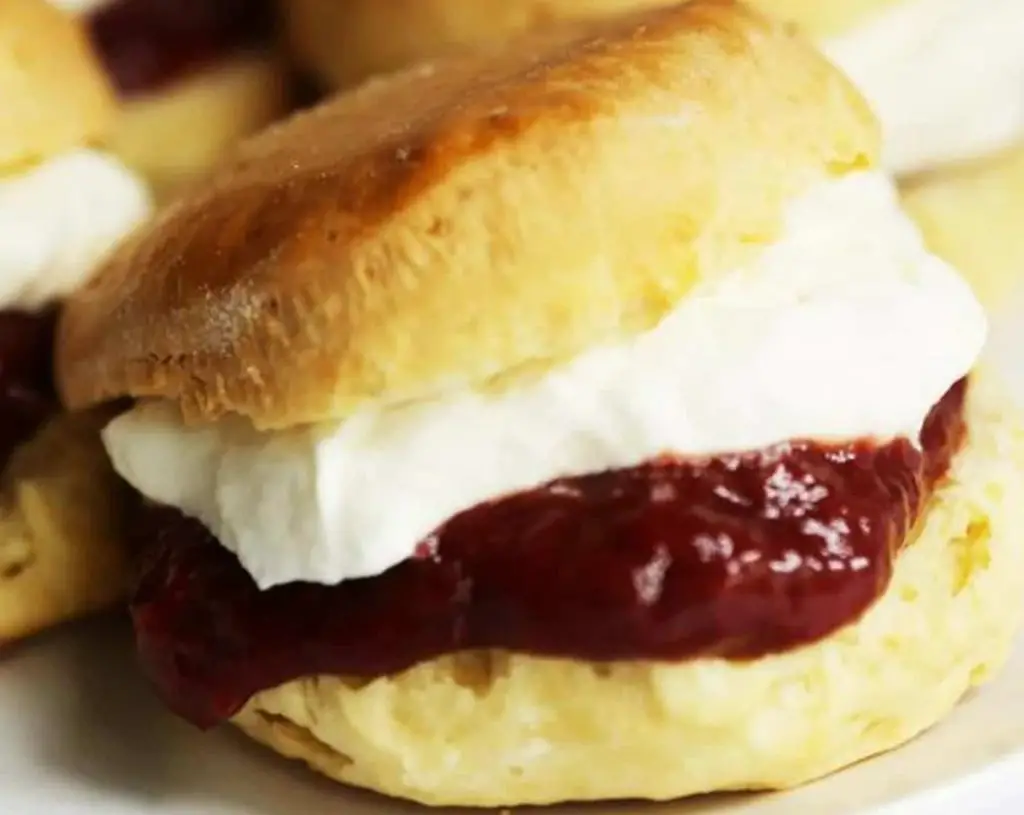
You May Also Like These Recipes
2. Savory Cheddar Cheese Scones
For those who prefer a savory treat, cheddar cheese scones offer a deliciously rich and cheesy alternative. They’re perfect for breakfast, brunch, or as a side dish for soups and stews.
Ingredients:
- 2 cups all-purpose flour
- 1 tablespoon baking powder
- ½ teaspoon salt
- ¼ cup cold butter, cubed
- 1 cup sharp cheddar cheese, grated
- 1 cup milk
- 1 egg, beaten, for glazing
Instructions to Make Savory Cheddar Cheese Scones
- Preheat your oven to 425°F (220°C).
- Sift the flour, baking powder, and salt into a bowl.
- Rub the butter into the flour mixture until it resembles breadcrumbs. Stir in the grated cheese.
- Pour in the milk and mix to form a soft dough.
- Proceed with the classic scone recipe for kneading, cutting, and baking.
- Brush with beaten egg before baking for a glossy finish.
Serving Suggestions:
- Serve warm with butter for a comforting snack.
- Pair with a bowl of tomato soup for a hearty lunch.
These cheese scones are a testament to the scone’s adaptability, proving that with just a few ingredients, you can create a variety of delicious treats suited for any occasion. Whether sticking to tradition or experimenting with flavors, scone baking is a rewarding and delicious way to connect with a piece of British culinary history.
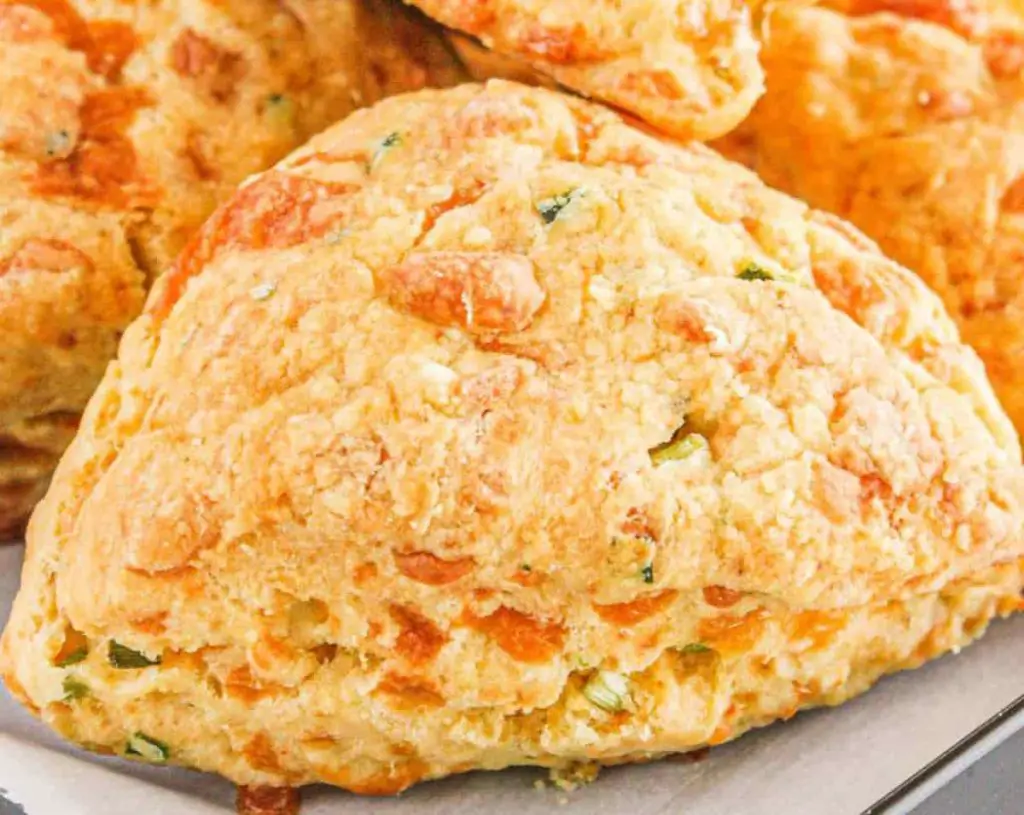
3. Lemon and Poppy Seed Scones
Lemon and poppy seed scones bring a refreshing twist to the traditional scone. This recipe pairs the light, tender crumb of classic scones with the zesty punch of lemon and the subtle crunch of poppy seeds, creating a perfectly balanced treat that’s ideal for spring and summer mornings.
Ingredients:
- 2 cups all-purpose flour
- 1/4 cup sugar
- 1 tablespoon baking powder
- 1/2 teaspoon salt
- 2 tablespoons poppy seeds
- Zest of 1 large lemon
- 1/2 cup (1 stick) cold butter, cut into pieces
- 3/4 cup heavy cream
- 1 large egg
- 1 teaspoon vanilla extract
- Glaze: Juice of 1 lemon mixed with 1/2 cup powdered sugar
Instructions to Make Lemon and Poppy Seed Scones
- Preheat your oven to 400°F (200°C). Line a baking sheet with parchment paper.
- In a large bowl, whisk together flour, sugar, baking powder, salt, poppy seeds, and lemon zest.
- Cut in the butter using a pastry blender or your fingers until the mixture resembles coarse crumbs.
- In a small bowl, whisk together the heavy cream, egg, and vanilla extract. Pour over the dry ingredients and mix until just combined.
- Turn the dough out onto a floured surface and knead gently into a flat disk. Cut into 8 wedges and place on the prepared baking sheet.
- Bake for 15-20 minutes or until lightly golden. Let cool slightly before drizzling with lemon glaze.
Tips for Balance:
- Use fresh lemon zest and juice for the glaze to ensure a vibrant citrus flavor.
- Avoid over-kneading the dough to keep the scones light and fluffy.

4. Vegan Blueberry Scones
Catering to those who follow a plant-based diet, these vegan blueberry scones are moist, fluffy, and bursting with blueberries. They prove that vegan baking can yield results just as delicious as traditional methods.
Ingredients:
- 2 cups all-purpose flour
- 1/2 cup sugar
- 2 1/2 teaspoons baking powder
- 1/2 teaspoon salt
- 1/2 cup cold vegan butter, cut into pieces
- 3/4 cup almond milk
- 1 teaspoon apple cider vinegar
- 1 teaspoon vanilla extract
- 1 cup fresh or frozen blueberries
Instructions to Make Vegan Blueberry Scones
- Preheat the oven to 400°F (200°C). Line a baking sheet with parchment paper.
- Mix the almond milk and apple cider vinegar in a bowl; set aside to curdle, creating a vegan buttermilk.
- In a large bowl, combine flour, sugar, baking powder, and salt. Cut in the vegan butter until the mixture resembles coarse crumbs.
- Stir in the almond milk mixture and vanilla extract until just combined. Gently fold in the blueberries.
- Form the dough into a circle on the baking sheet, then cut into 8 wedges. Separate the wedges slightly.
- Bake for 20-25 minutes, until the scones are golden brown.
- Cool on a wire rack before serving.
Vegan Tips:
- Freeze the vegan butter before incorporating it into the dough to mimic the texture of traditional scones.
- If desired, swap the blueberries for other vegan-friendly add-ins like nuts or other fruits.
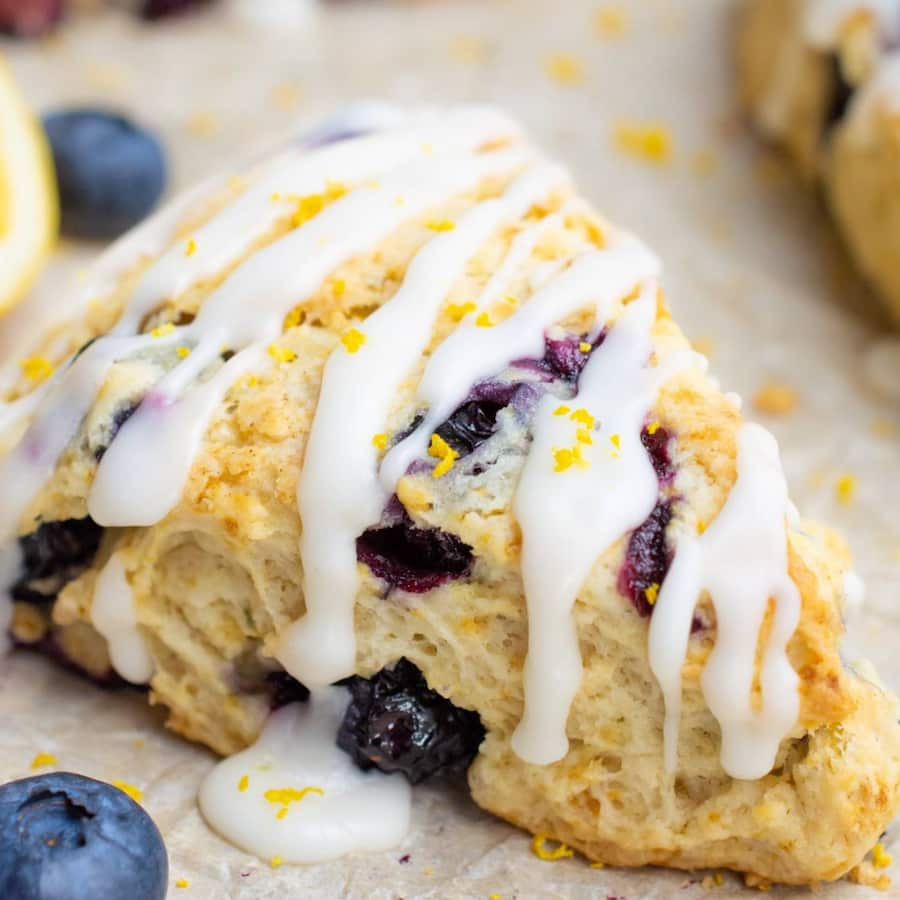
5. Gluten-Free Almond Scones
These gluten-free almond scones are a delightful alternative for those avoiding gluten. Made with almond flour, they offer a nutty flavor and tender crumb that even those not following a gluten-free diet will love.
Ingredients:
- 2 1/2 cups almond flour
- 1/3 cup sugar
- 1 teaspoon baking powder
- 1/4 teaspoon salt
- 1/4 cup cold butter, diced (or coconut oil for dairy-free)
- 2 large eggs
- 1 teaspoon almond extract
Instructions to Make Gluten-Free Almond Scones
- Preheat the oven to 350°F (175°C). Line a baking sheet with parchment paper.
- In a large bowl, whisk together the almond flour, sugar, baking powder, and salt.
- Cut in the butter or coconut oil until the mixture resembles coarse crumbs.
- In a separate bowl, beat the eggs with the almond extract, then stir into the dry ingredients until just combined.
- Form the dough into a circle on the prepared baking sheet, about 1 inch thick, and cut into 8 wedges.
- Bake for 18-22 minutes, or until the edges are golden brown.
- Allow to cool before serving. These scones are particularly delicious with a dollop of jam or cream.
Texture and Taste Adjustments:
- Almond flour can make the scones more moist than traditional recipes, so be careful not to overbake.
- Experiment with adding a half cup of dried fruit or nuts to the dough for additional texture and flavor.
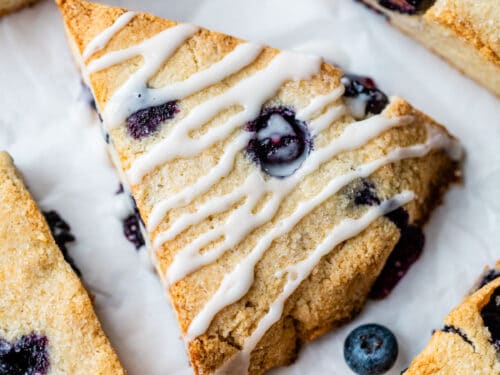
6. Pumpkin Spice Scones
As autumn rolls in, the comforting flavors of pumpkin and spice beckon. These pumpkin spice scones capture the essence of the season, featuring real pumpkin puree and a warm blend of spices. They’re perfect for cozy mornings or as a festive treat to share.
Ingredients:
- 2 cups all-purpose flour
- 1/3 cup brown sugar, packed
- 1 teaspoon baking powder
- 1/2 teaspoon baking soda
- 1/2 teaspoon salt
- 1 teaspoon ground cinnamon
- 1/2 teaspoon ground nutmeg
- 1/4 teaspoon ground ginger
- 1/4 teaspoon ground cloves
- 1/2 cup cold butter, cubed
- 1/2 cup pumpkin puree
- 1/4 cup heavy cream
- 1 large egg
- 1 teaspoon vanilla extract
- For the glaze: 1 cup powdered sugar mixed with 2 tablespoons maple syrup and 1-2 tablespoons milk (adjust for desired consistency)
Instructions to Make Pumpkin Spice Scones
- Preheat your oven to 400°F (200°C). Line a baking sheet with parchment paper.
- In a large bowl, whisk together the flour, brown sugar, baking powder, baking soda, salt, cinnamon, nutmeg, ginger, and cloves.
- Add the cubed butter and use a pastry blender or your fingers to work it into the dry ingredients until the mixture resembles coarse crumbs.
- In a separate bowl, whisk together the pumpkin puree, heavy cream, egg, and vanilla extract.
- Fold the wet ingredients into the dry ingredients, stirring just until the dough comes together.
- Turn the dough out onto a floured surface and shape it into a 1-inch thick round. Cut into 8 wedges and place on the prepared baking sheet.
- Bake for 20-25 minutes, or until golden brown. Allow the scones to cool before drizzling with the maple glaze.
Tips for Pumpkin Spice Perfection:
- Use pure pumpkin puree rather than pumpkin pie filling for a more authentic flavor.
- Freshly grated nutmeg can add a vibrant burst of flavor compared to pre-ground nutmeg.
- For an even more pronounced spice flavor, you can adjust the quantities of cinnamon, nutmeg, ginger, and cloves to taste.
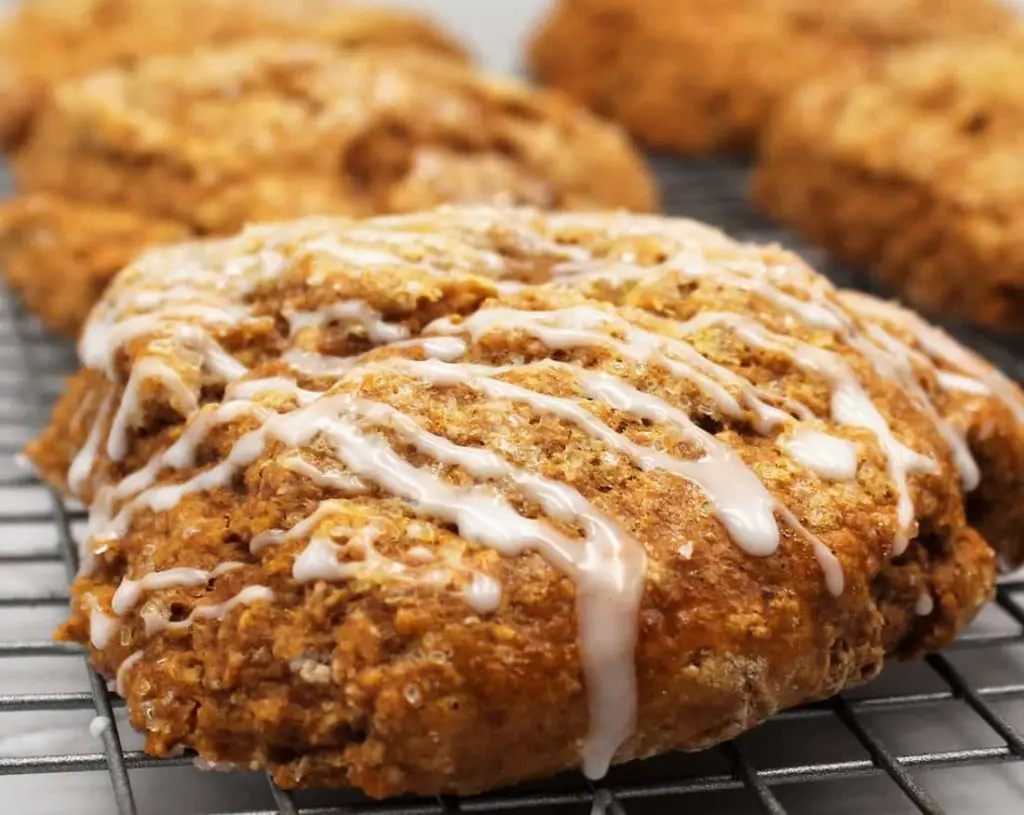
Mary Berry Buttermilk Scone
In my collection of favorite scone recipes, I’m excited to share one inspired by Mary Berry, which blends classic baking with a modern twist. This buttermilk scone recipe celebrates the simplicity and quality that baking is all about. Using buttermilk not only makes the scones deliciously rich but also helps them rise perfectly, creating a soft and fluffy texture. It shows how great ingredients can lead to stunning and tasty scones.
Ingredients:
- 450g (about 3 ⅔ cups) self-raising flour, plus extra for dusting
- 2 rounded teaspoons baking powder
- 75g (⅓ cup) butter, chilled and cubed
- 50g (¼ cup) caster sugar
- 2 large eggs
- About 225ml (1 cup) buttermilk, plus extra for glazing
- Optional: raisins or sultanas for a fruited variation
Instructions to Make Mary Berry Buttermilk Scone
- Preheat your oven to 220°C (425°F, Gas Mark 7). Lightly grease a baking sheet or line it with parchment paper.
- In a large bowl, sift together the self-raising flour and baking powder. Add the chilled, cubed butter and rub it into the flour using your fingertips until the mixture resembles fine breadcrumbs. Stir in the caster sugar.
- In a separate bowl, beat the eggs and then makeup to 300ml (about 1 ¼ cups) with the buttermilk. Set aside a little of this liquid for glazing the scones later.
- Gradually add the liquid to the dry ingredients, stirring until you have a soft, slightly sticky dough. If you’re adding raisins or sultanas, fold them in now.
- Turn the dough out onto a lightly floured surface and knead it very lightly and briefly into a round about 2.5cm (1 inch) thick.
- Use a 5cm (2 inch) fluted cutter to stamp out scones from the dough, re-kneading and re-rolling the trimmings as necessary.
- Place the scones on the prepared baking sheet, brush the tops with the reserved buttermilk, and bake in the preheated oven for about 10-15 minutes, or until well-risen and golden.
- Cool on a wire rack, or enjoy warm with clotted cream and jam for the ultimate treat.
Tips for Perfect Buttermilk Scones:
- Do not overwork the dough; the less you handle it, the lighter and fluffier your scones will be.
- Brushing the scones with buttermilk before baking gives them a beautiful golden top.
- If you don’t have self-raising flour, you can make your own by adding 2 teaspoons of baking powder to every 150g (1 cup) of all-purpose flour.
This recipe, inspired by Mary Berry’s buttermilk scones, is perfect for anyone looking to achieve bakery-quality scones at home. Whether enjoyed with a slather of jam and cream or savored plain with a cup of tea, these scones promise to be a delightful treat for any occasion.
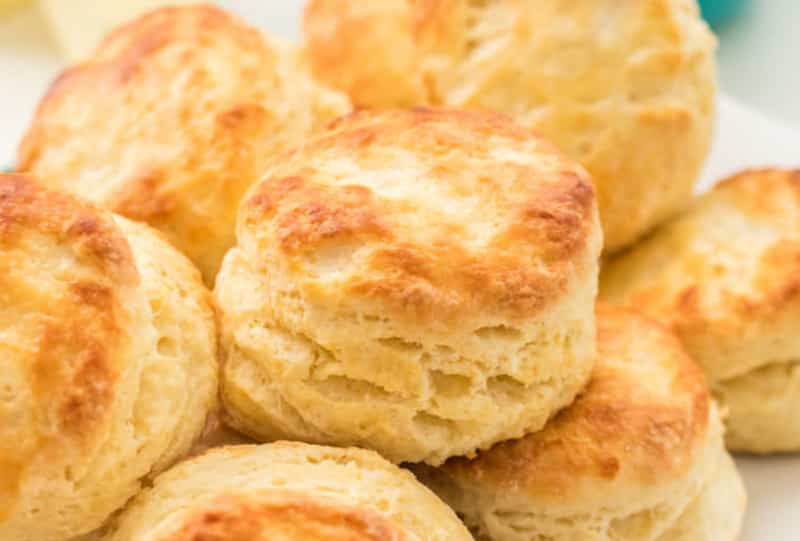
How do you make light scones?
To achieve light and fluffy scones, several key steps are crucial:
- Use cold butter, as this helps create small pockets of steam while baking, leading to a lighter texture.
- Don’t overwork the dough. Mix until just combined to prevent developing the gluten excessively, which can make the scones tough.
- Use a gentle hand when shaping and cutting the scones to avoid compacting the dough.
- Ensure your leavening agents (baking powder or soda) are fresh for the best rise.
- Bake the scones in a preheated hot oven to get a quick rise before the crust forms, which helps keep them light and airy inside.
Essential Equipment for Baking Scones
For those looking to bake scones at home, having the right equipment can make the process smoother and more enjoyable. Here are some essentials:
- Mixing Bowls: A set of mixing bowls is crucial for combining your dry and wet ingredients separately before mixing them together.
- Pastry Blender: This tool helps cut the butter into the flour to create a crumbly texture. If you don’t have one, two knives or your fingertips will do the trick.
- Measuring Cups and Spoons: Accurate measurements are key to baking success, making these tools indispensable.
- Baking Sheet: A flat baking sheet lined with parchment paper is where you’ll bake your scones, ensuring they don’t stick and have enough room to rise.
- Rolling Pin: While some scone recipes don’t require rolling out the dough, a rolling pin is useful for those that do.
- Round Cutter: A round cutter ensures your scones are uniformly shaped, contributing to even baking. You can also use the rim of a glass in a pinch.
History of the Scone
The scone, a beloved baked good, has its origins deeply rooted in British culinary tradition. Initially, scones were made with oats and baked on a griddle, dating back to early Scotland. Over the years, as baking methods and ingredients evolved, so did the scone. The introduction of baking powder in the 19th century allowed scones to achieve their well-known rise and fluffiness. Today, scones are celebrated worldwide, with various adaptations and flavors, from the classic British cream tea accompaniment to savory American biscuit-like variations.
FAQs
Can I use regular milk instead of buttermilk in Mary Berry’s scone recipe?
Yes, you can use regular milk as a substitute for buttermilk in the scone recipe, though the final texture and taste may slightly differ. Buttermilk’s acidity contributes to the tenderness of the scones and reacts with baking powder for a good rise. If you don’t have buttermilk, add 1 tablespoon of lemon juice or white vinegar to a cup of regular milk and let it sit for 5-10 minutes to make a quick buttermilk substitute.
How do I ensure my buttermilk scones rise and stay fluffy?
To ensure your buttermilk scones rise well and remain fluffy, follow these tips: use cold butter and avoid overworking the dough. Mix the dough until just combined to prevent activating the gluten too much. Also, make sure your baking powder is fresh, as it’s crucial for the rise. When shaping your scones, press down with a cutter but don’t twist, as twisting can seal the edges and inhibit rising.
Can I add flavors or ingredients to the buttermilk scone recipe?
Absolutely! This buttermilk scone recipe is versatile, allowing you to add a variety of flavors or ingredients. Consider folding in dried fruits like raisins or sultanas, or adding a hint of citrus zest for a fresh flavor. If you prefer a savory version, try incorporating grated cheese and herbs. Just remember to add these ingredients to the dough right before you bring it together to ensure even distribution without overmixing.
Should scones be served with salted butter?
Serving scones with salted butter is entirely a matter of personal taste. Traditionally, scones are served with clotted cream and jam, particularly in the UK. However, the slight saltiness of salted butter can complement the sweetness of the scone and any added jam, creating a delightful balance of flavors. If you prefer a hint of salt in your spread, salted butter is a great choice. Alternatively, unsalted butter allows the natural flavors of the scone, cream, and jam to shine through without the added saltiness.
Final Words
There you have it, seven enticing scone recipes to explore throughout the year. From the timeless elegance of classic British scones to the seasonal charm of pumpkin spice scones, each recipe offers a unique twist on a beloved treat. Baking scones provide not just the pleasure of eating them but also the joy of creating something warm, inviting, and wonderfully aromatic. Whether you’re a seasoned baker or new to the kitchen, these recipes are designed to bring success and satisfaction. So, preheat your oven, gather your ingredients, and get ready to fill your home with the delightful scents of freshly baked scones. Happy baking!



